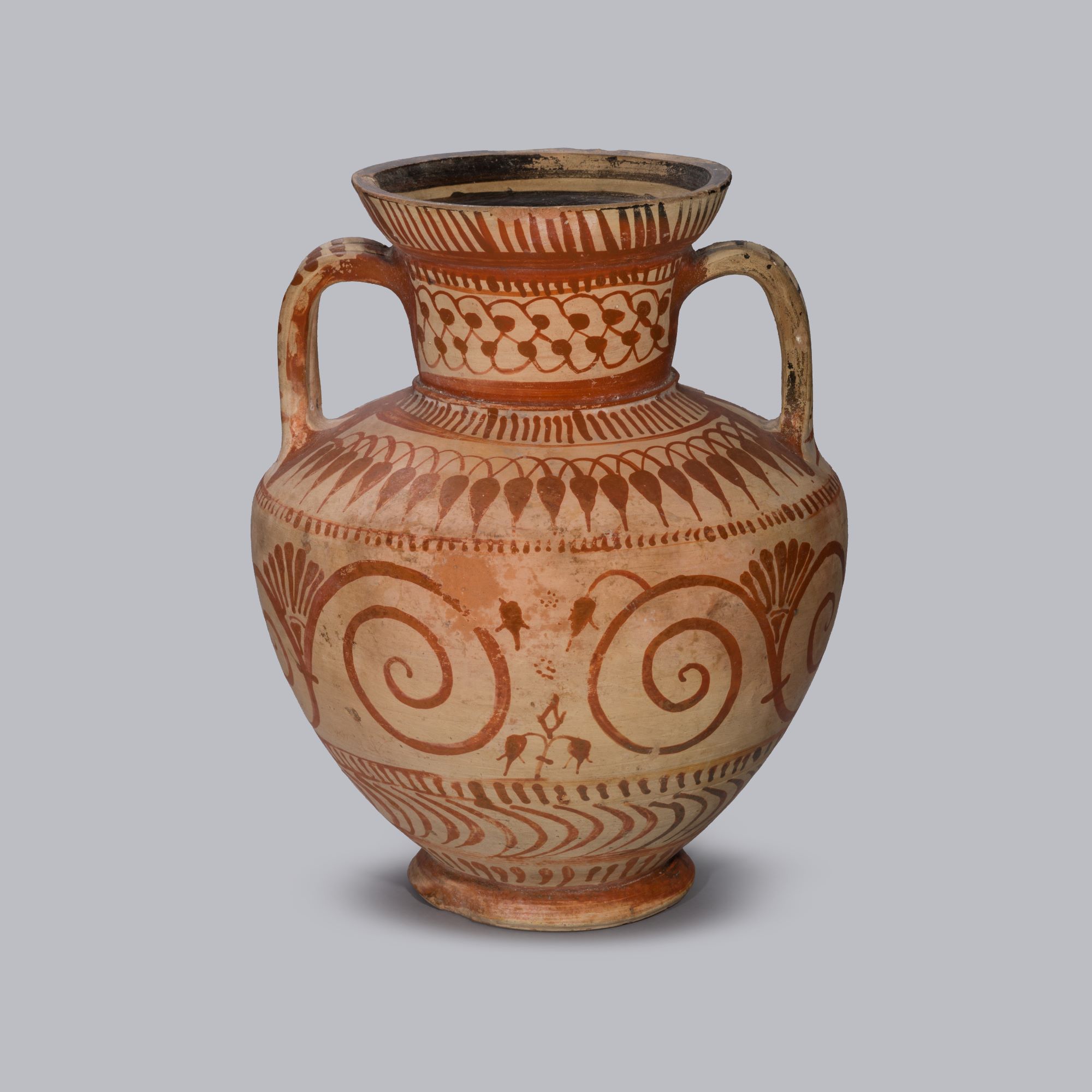
Amphora [Gr61]
Fikellura Ware, by the Volute-Zone Group, 530-500 BC
Painted terracotta (h. 28.8 cm, d. 22.6 cm)
Fikellura pottery is named after a site on Rhodes, where many examples have been found, but it is now known to have been made in Miletus. The distinctive style emerged around 550 BC and died out about fifty years later. It was the last significant contribution of East Greek potters to the tradition of vase painting. From the 5th century onwards, very little painted pottery was produced in Ionia.
The bold rhythmic decoration of this vase is typical of Fikellura ware. It combines purely abstract designs with stylised forms derived from nature, such as the volutes and palmettes around the main part of the body, and a chain of lotus buds on the shoulder. Archaeologists have classified Fikellura pottery into groups, based on certain decorative tendencies. This example is assigned to the ‘Volute-Zone Group’ along with closely related vases in Basel (1906.252), Amsterdam, Kassel and New York.
Like many Fikellura vases, this amphora came from Rhodes. It was given to Winchester by Sir Augustus Wollaston Franks (1826-1897), one of the leading British collectors of the 19th century and a significant donor to the British Museum.
Literature: R. Foster, Winchester College Treasury: a guide to the collections (Winchester, 2016), p. 56; J. Falconer and T. Mannack, Corpus Vasorum Antiquorum: Great Britain, Fascicule 19: Winchester College (Oxford, 2002), pp. 18-19, plate 14.1-4; C.A. Picón, Classical Antiquities from Private Collections in Great Britain (London, 1986), p. 18 (no. 8), plate II; Winchester College Memorial Buildings: Department of Classical Art (Winchester, 1909), p. 15 (no. 26)
Exhibited: Sotheby’s, London, 1986
Provenance: From Rhodes, given to Winchester College by Sir Augustus Wollaston Franks (1826-1897)
Location: Treasury, Gallery 3